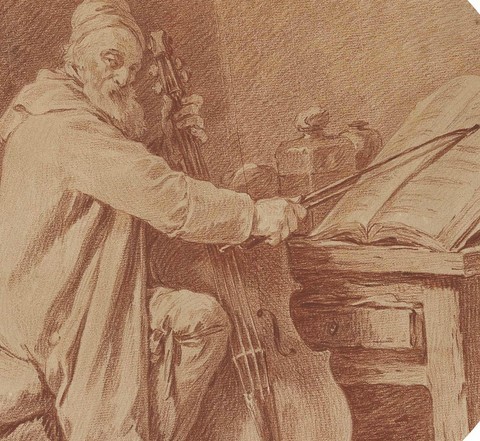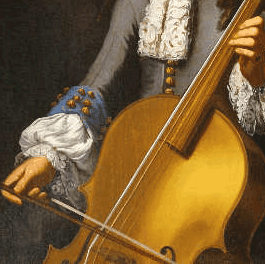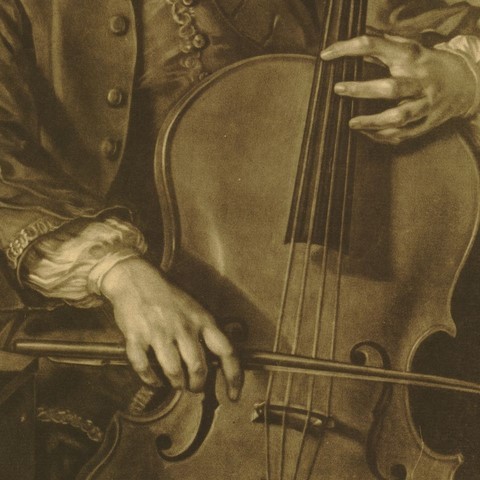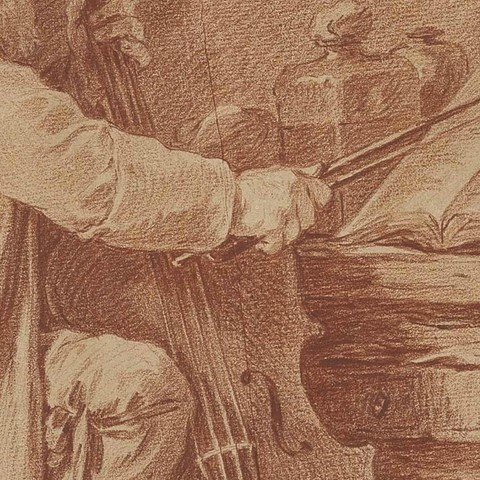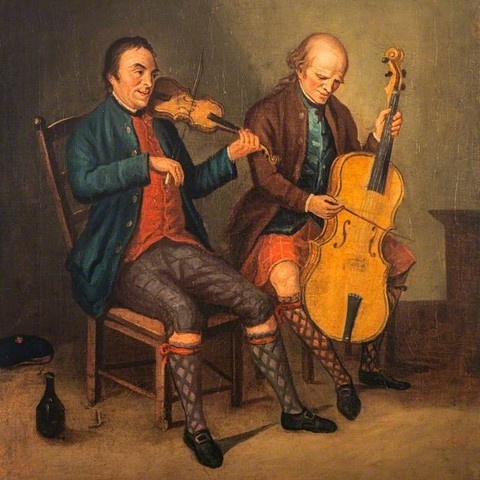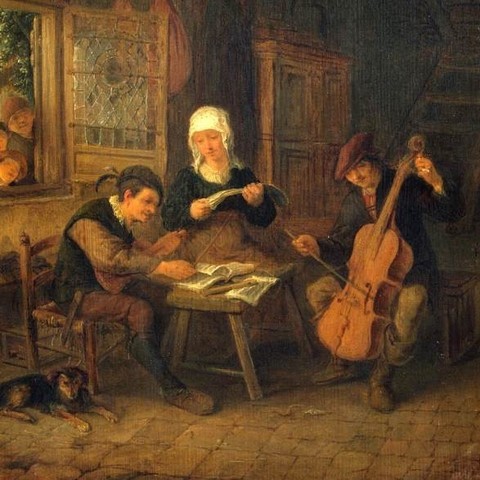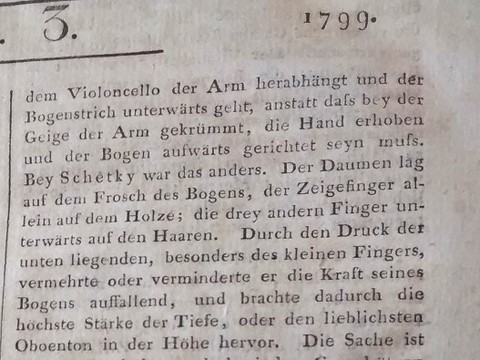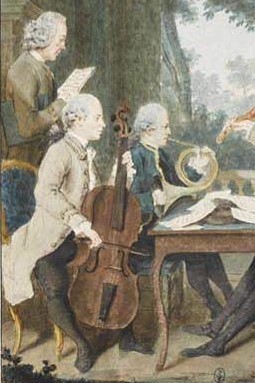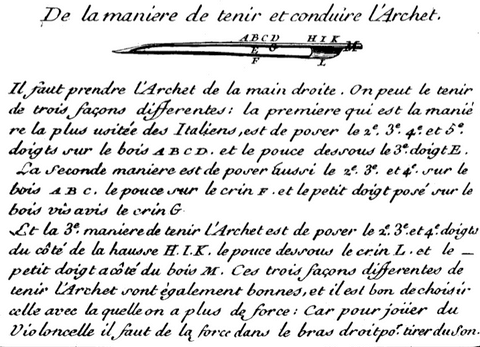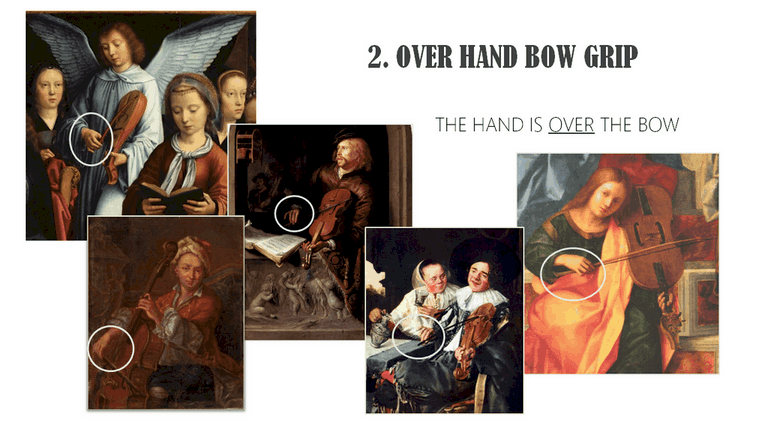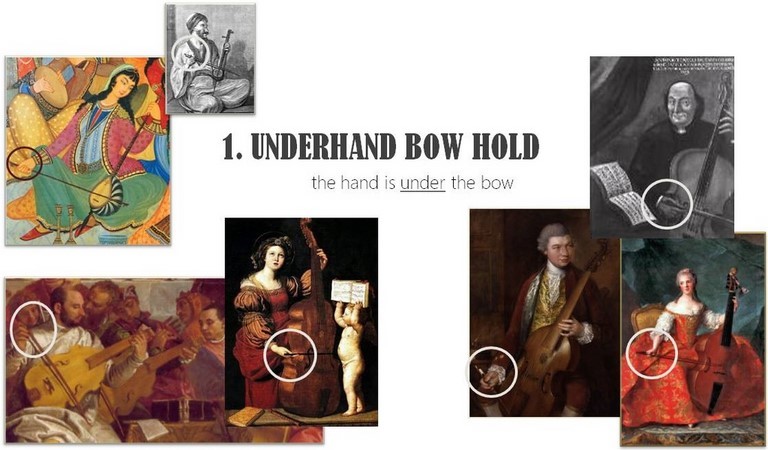L'archet du violoncelle baroque
.
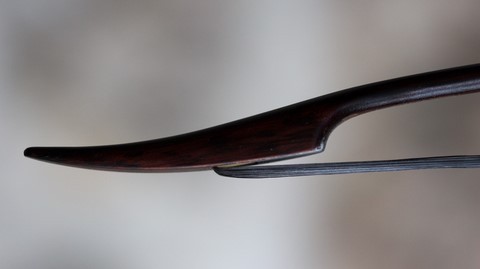
Archet fait par Hans Reiners, Berlin
.
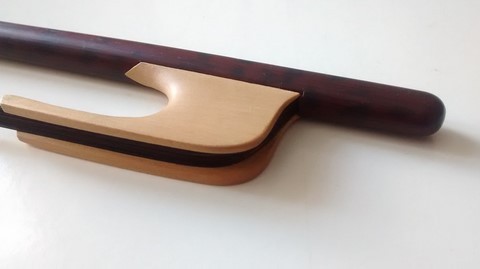
.
.
..
TENUE AVEC LA MAIN EN-DESOUS
.
Observation de peintures
ROYAUME UNI
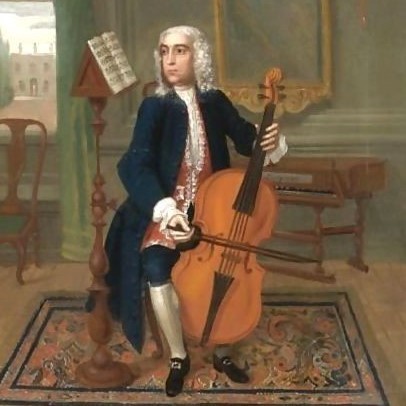
Portrait of a gentleman seated playing cello, by Charles Philips, circa 1720
italIE
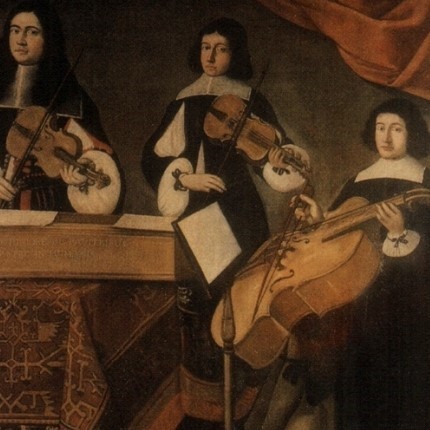
Concerto in casa Lazzari by Girolamo Martinelli
vue detaillée
A considérer...
Dans des pays tels que L'Italie, l'Allemagne, les Pays Bas, la tenue d'archet la plus courante
pendant l'epoque baroque était avec la main en dessous.
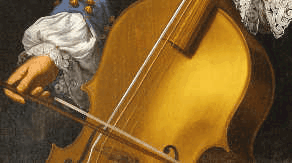
"Iconographic study of the violoncello and the way it was played up to the year 1800"
"Certain Aspects of baroque music for the violoncello as finally exemplified in the suites for
unaccompanied violoncello by J.S. Bach. (thesis, doctorate, University of South Australia 1983-4)"
LIRE: "The cello bow held the viol way, once common, but almost forgotten" by Mark Smith
.
.
Translation
The thumb was laying on the frog of the bow, the second finger was on the stick, and the other 3 fingers were on the bow hair. By the pressure of those fingers, especially the little finger, he increased the tension of his bow .
.
CELEBRES VIOLONCELLISTE QUI JOUAIENT AVEC LA MAIN SOUS LA HAUSSE
FERDINANDO III DE MEDICIS
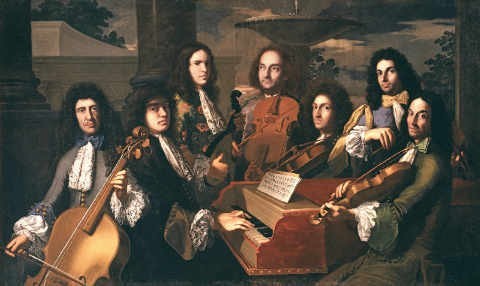
His Villa in Patrolino was a center of music where he held operatic production in a theater built for that purpose. Close to D. Scarlatti, he produced five of his operas. Ferdinando was also in contact with J.F. Handel. Vivaldi dedicated him L'Estro Armonico, a collection of twelve concertos for one, two and four violins.
Antonio Vandini
"Antonion Vandini, the famous violoncello, who they say play a parlare upon his instrument" [...]
it is remarkable that Antonio and all the other violoncello players here hold the bow in the old fashioned way with the hand under it"
Charles Burney,
Excerpt from: “Music men, and manners in France and Italy 1770”
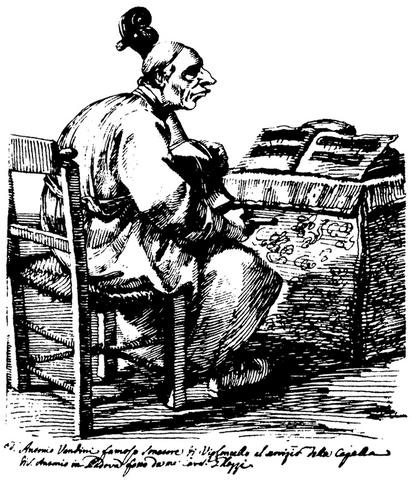
His career:
- Colleague of A. Vivaldi in 1720
- First violoncellist of the Church of St. Antonio in Padua, concertmaster: Tartini (1721)
- 1726-70: Back to his position of principal cello of the Church of St. Antonio in Padua.
- 1776-78: Back to Bologna his birth town where he taught until his death.
Composition for the violoncello:
Concerto in D major
Six Sonatas
Charles Burney, Excerpt from: “Music men, and manners in France and Italy 1770”
MARKUS GRAUEL
German cellist Markus Graüel was born in Eisenach in the first half of the eighteenth century.
He joined the chamber musicians of the Prussian Court in Berlin from 1742 until 1798.
Excerpt from "An eighteenth century musical tour in central Europe and the Netherland."(1773)
J. C. SHETCKY
In 1799 the "Allgemeine Musikzeitung" published a long biographical print where his bow hold is described, explaining that his thumb was laying on the frog of the bow, the index finger was alone on the stick, and the other fingers were on the bow hair.
Highlights of his career: Schetky spent six months in Hamburg in 1761 where he got offered a Stradivarius.
- 1761-68 Cellist of the court orchestra of Darmstadt
- 1768-69 Played concerts in Hamburg
He also appeared in concerts in London where he got the patronage of J.C. Bach.
.
tenue d'archet AVEC la main sur la baguette
peintures, documents historiques
angleterre
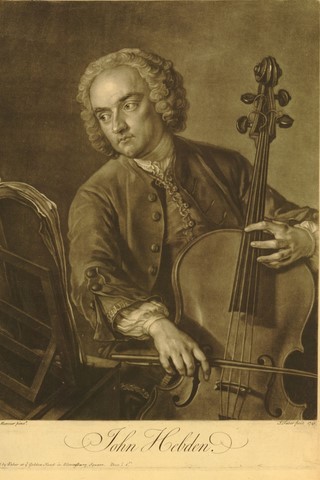
angleterre
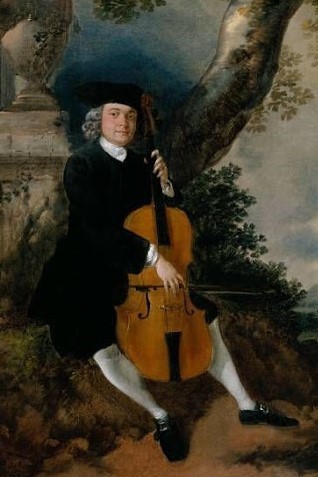
Excerpt from: The Rev. John Chafy Playing the Violoncello in a Landscape, Gainsborough - c.1750-2
Italie
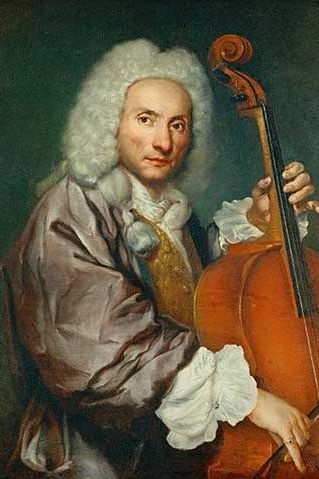
Portrait of Giovanni Battista Cirri by Giacomo Ceruti
:
PREMIER VIOLONCELLISTE virtuoso reconnu a travers L'europe
FRANCESCO ALBOREA
he received by far the highest salary paid to any violoncellist at the chapel (1260 fl. while the standard salary was between 150 and 500 fl.)
.
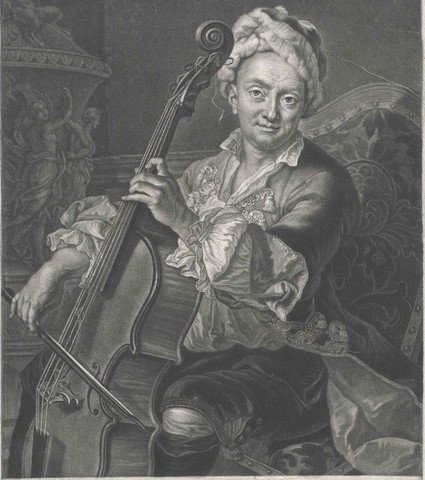
«The incomparable violoncellist Fransciscello."
J. Quantz
.
.
famous cellists - unknown bowhold
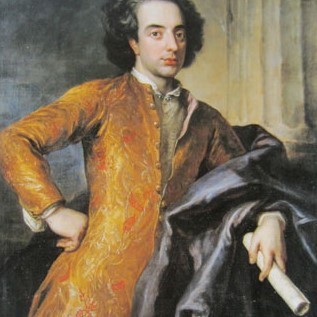
This is the only portrait of Berteau, there is no more information about his bow and bow-hold.
Before becoming a cellist, Berteau was a fine bass viol player. Important figure as a performer teacher and composer, "The famous Bertaud", is considered as the founder of the French school of violoncello. He left no written record of his teaching method, but many of his pupils did. Among them: the Brothers Janson, Jean-Pierre Duport, Jean-Baptiste Bréval, François Cupis de Renoussard, Joseph Tillière, Dominique Bideau. Famous for his use of harmonics, he composed 6 cello sonatas Sonate Da camera a violoncello Solo col Basso Continuo op.l where he wrote an explanation on how to play harmonics on the cello.
